3D tiles: selection criteria
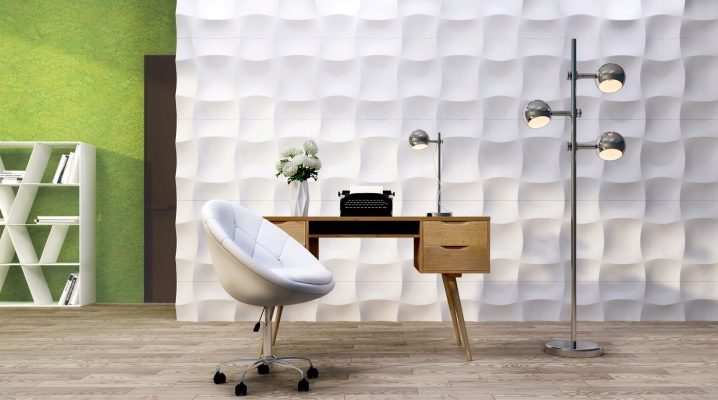
Recently, special attention has been paid to the cladding of dwelling surfaces. It is important not only to make a high-quality finish, but also to choose the right type of material used. 3D tiles are in the spotlight: being a unique finishing material, it obliges you to take into account certain rules when buying.
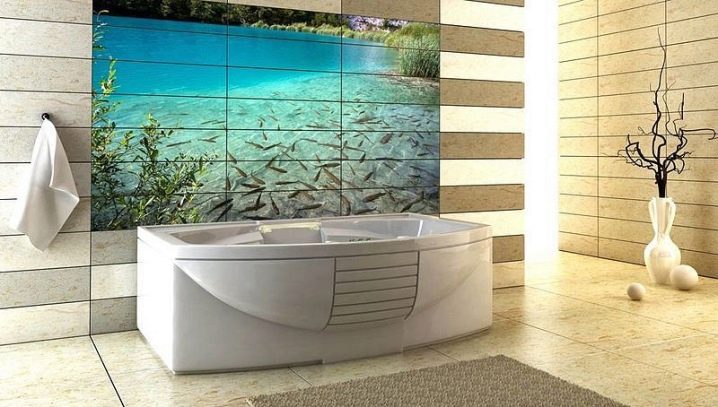
Peculiarities
3D tiles are cladding materials with a three-dimensional effect. There is a carbon film on its surface, thanks to which it is possible to achieve a various volumetric effect.
Depending on the variety, the dimensions of this material can be 25 x 25, 50 x 50, 100 x 100 cm. The drawing is most often done in raster, abstract or geometric. The 3D effect can be seen from anywhere in the view.
In fact, this is a kind of wall and floor tiles, which differs from the usual counterparts in the visibility of the applied pattern. This material has nothing to do with the epoxy floor poured onto a concrete base. This is a material with an unusual smooth and embossed type of texture, differing in the type of pattern, which in some varieties differs in the manufacturing method.
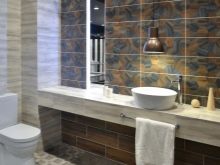

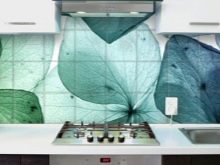
When facing the surface, it can form a single monolithic canvas, visually changing the dimensions of the space. At the same time, the material is unique in that it can represent a complete picture with a three-dimensional effect.
The downside of this material is the complex perception of individual drawings. For this reason, the choice of three-dimensional tiles must follow certain rules. It will not look harmonious in every room. What matters is the size of the picture, its visual depth and the image itself. In some cases, it is this that creates a negative effect, making the interior complex, devoid of harmony.
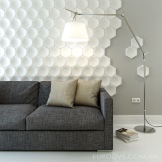
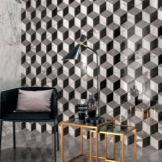
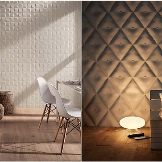
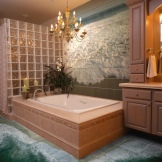
More often, such stereoscopic material is used in the decoration of the walls of the bathroom and kitchen. In the first case, it is preferable to trim accent areas or select compositions that do not overload the overall picture of stylistics.
In the kitchen, three-dimensional tiles are appropriate for finishing the plane under the kitchen backsplash. In both cases, stereoscopic tiles perform the function of increasing the space, which is especially important for rooms with a lack of footage.
This material can be glossy, matte, rough. The surface texture is the main determinant of the effect of the effect on the eyes. If the surface is flat, the perception is softer.
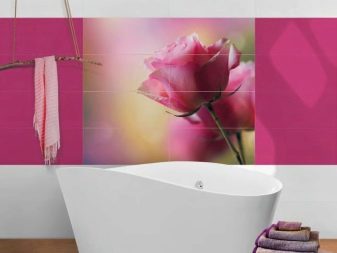
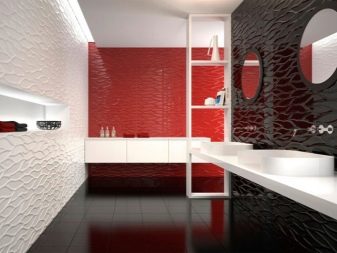
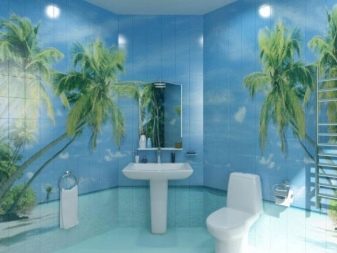

In the case of relief, the situation is different: the volume often hits the eyes, creating an internal imbalance. These factors should be taken into account when choosing a finishing material in a store: not everything that seems beautiful at close range is appropriate in a particular room. This is especially noticeable when the space of the room is limited: in most cases, the pattern of stereoscopic tiles is quite large.
An important point is the fact that such tiles cannot be cut. As an alternative to tiles, it has several additional layers, so cutting in the usual way can violate the integrity of the material, deteriorating decorative and practical characteristics.
Grouting of this material is carried out with a colorless silicone sealant. This tile can be both wall and floor, it is important to consider this when buying.
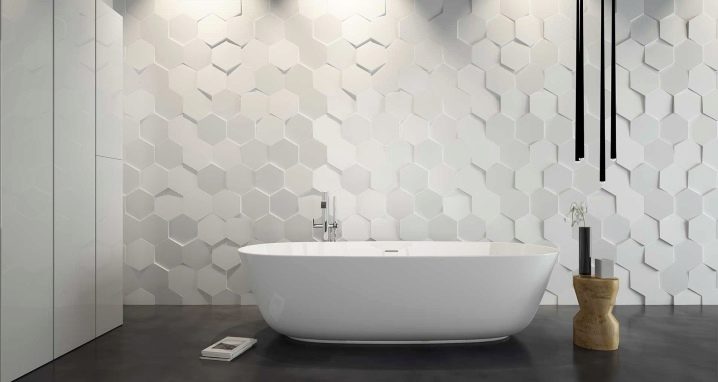
Views
In the modern construction market, 3D tiles are presented in several varieties.
Outdoor
This category of ceramic coating includes two types of finishing material:
- Flat - material with a tile base and a three-dimensional pattern (used mainly in bathrooms, bathrooms, in the kitchen);
- With a liquid filler - a tile, when pressed on which the effect of a living pattern is created due to the presence of a helium compound in the finishing material (material for decorative decoration of a part of the floor).
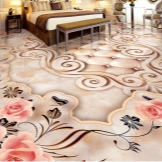
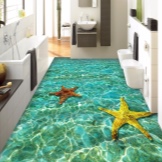
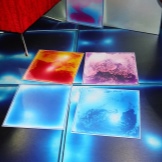
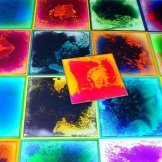
The second type is interesting in that when pressed, the color of the coating changes. The helium variety completely loses its properties during cutting. If you have to crop a flat category, it will be reflected in the lines of the drawing, leading to distortion.
The disadvantage of the material is its high cost. In addition to the main two categories, paving slabs with a 3D effect can also be purchased on the market.
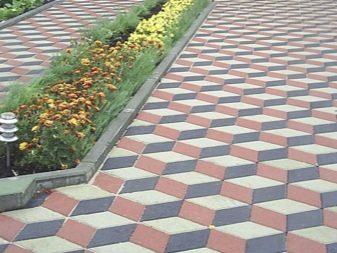

Wall
This branch includes three types of finishes:
- Flat ceramic with a print and a bright image, characterized by a clear pattern and high resistance to mechanical stress. Suitable for cladding various dwelling rooms (including residential ones).
- Glass. It is made of tempered glass, on which a processed image is applied by means of microlensing technology (the stereo effect moves with a change in the position of the viewer). It is particularly durable. Laying is carried out like a tile. The tile is afraid of strong impacts on the side edge.
- Embossed tiles. This is a large-format or mosaic variety with unlimited possibilities of texture, the ability to imitate a block, hemisphere, plants, flowers (a unique material that is inherent in the complexity of care).

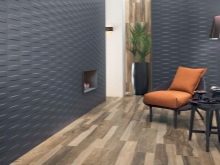
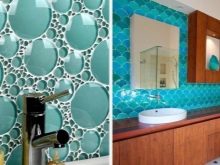
According to the assurances of the manufacturers, this material is durable and can decorate processed surfaces up to 35 years. Due to the special coating, it does not slip, it is characterized by shock absorption when walking.
These tiles are resistant to mold. However, it is demanding on the preparation of the base and does not allow a slope of more than 2 degrees when facing.
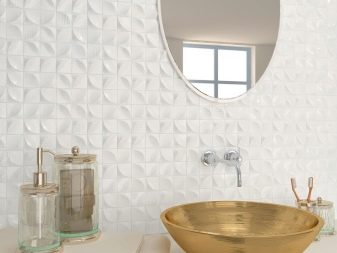
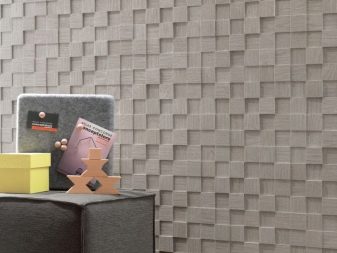
Materials (edit)
The components of each material depend on the specific type of tile. In one case, crushed stone, sand, cement and a plasticizer (for sidewalk type) are used.
The ceramic variety is made from clay or a variety of ceramic masses. In addition to clay components, the constituents are sand, aluminosilicates, potassium, sodium and calcium carbonates.
Clay is mixed with other components in strictly calculated proportions. The mixture is ground, crushed, molded, dried, fired. The 3D effect is achieved in different ways. It is applied by sublimation, decal, using paints, or ceramic ink. Wall materials are made of glass.
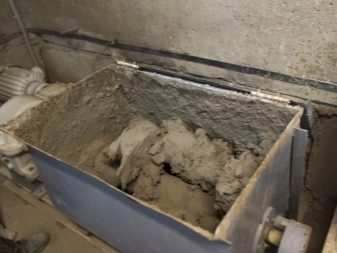

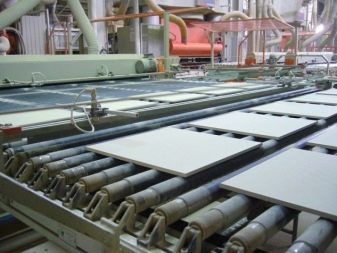
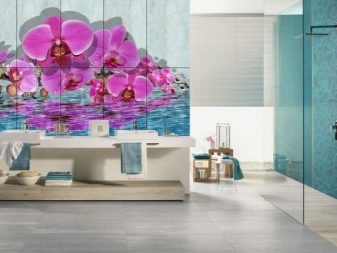
Other varieties include gypsum tiles. It differs in size, which is why it is more commonly referred to as panels. This material looks especially impressive, it often allows you to convey the desired mood without an abundance of patterns on the surface. Looks easy and elegant.
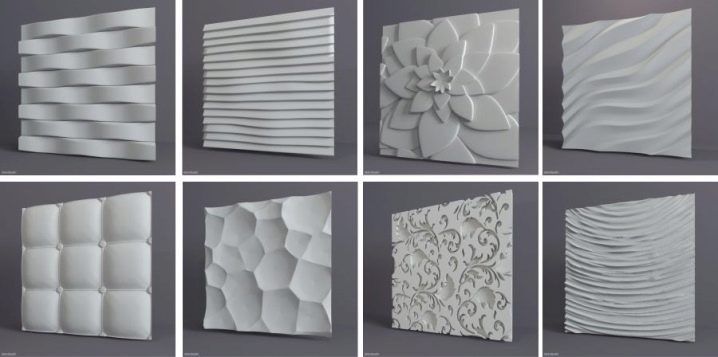
Design
There are a lot of design techniques for this tile today. Manufacturers focus on the unusual effect. In each case, the design is subject to the purpose of the room, taking into account the characteristics of care. Where the material is more prone to contamination, choose a flat tile with a pattern. In the bathroom, you can buy a round shape that is easier to wipe clean in case of contamination.
For accent areas, buy material in the form of waves. Wavy wall tiles look unusual. Due to its streamlined shape, it smooths out the sharp lines of the interior. Some categories are transparent. This allows for backlighting to enhance the depth effect.

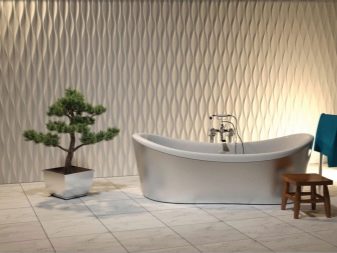
An interesting technique is the tile-panel. This variety goes well with tiles, decorative and natural stone, ceramic and glass mosaics. This feature allows you to use 3D tiles for ceiling decoration. However, filling the entire surface is unacceptable.
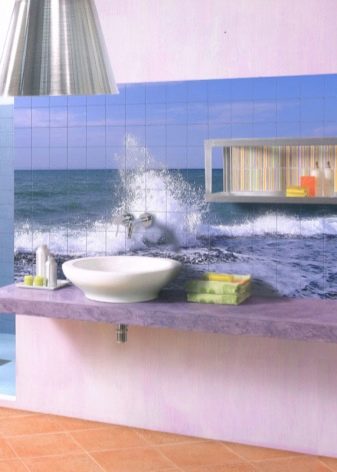
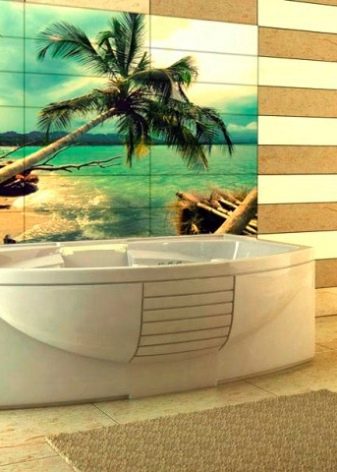
The color of the material can be very different.Tiles can be white, cream, light gray, beige, steel, and have a metallic sheen. One of the brightest solutions are varieties with a pattern that depends on the purpose of the room. For example, the assortment for the bathroom is distinguished by typical marine colors, among which turquoise, blue tones, diluted with paints of lush greenery, are especially attractive. If the print contains shells, the main background is often sandy.
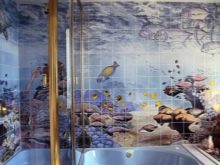
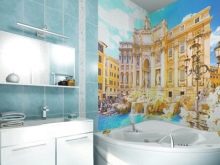
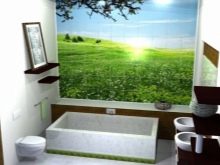
Varieties for the living room are often monochromatic, the relief of which conveys stylistic patterns. These are all kinds of leaves, branches, geometric motifs, which often include small accents (for example, flowers). The texture with waves on a monochromatic background looks stylish, while it does not overload the space. Rhombuses, circles, hexagons that make up a single canvas look good.
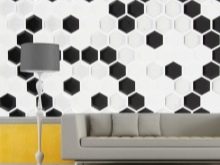
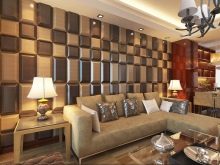

The design can be the most unusual, different directions of the drawing can be used. The canvas can consist of fragments with longitudinal, transverse stripes of different width, number and depth of relief.
Combining with non-patterned pieces, they create a stylish accent. It looks especially interesting if the surface of the tile has a metal coating. If, in addition to the embossed stripes, a contrasting pattern is printed on the surface, this variety can also decorate the living room.
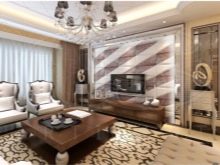
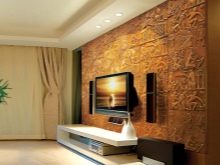
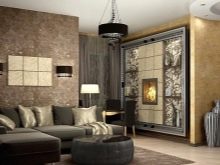
How to choose?
The choice of tiles with a three-dimensional image depends on the type of finishing materials. Initially, you need to understand: wall and floor cladding is subject to a specific weight load, it differs in thickness, size, shape and relief capabilities.
Choose it so as not to crop fragments. This takes into account the location.
You can arm yourself with simple recommendations from specialists - this will help you make your choice correctly and harmoniously:
- Consider the style of the interior: if you use a lot of furniture and accessories, this material may be superfluous.
- If the option with a pattern is chosen as the basis, it should be light, large prints are excluded: they hide the area of the room, visually reducing the height and width of the walls.
- Pay attention to the form: if the design direction favors simplicity and strict geometry, exclude varieties with complex weaves, they will break the style.

- In a cramped room, a dynamic image with an abundance of bright spots is inappropriate: it is more appropriate if the tile will represent a modest accent on a monochromatic base.
- The shades of the picture must fit into the main background of the interior of the room, otherwise they will look out of place.
- Do not use both floor and wall finishes in the same space, even if you are planning a bathroom cladding: the three-dimensional effect on most surfaces will quickly irritate the eyes, affecting the psyche.
- Pay attention to the size and texture of the print: when choosing a wood-like pattern for the walls, keep in mind that it should not be repeated in the finish of the floor (the abundance of wooden surfaces will simplify the interior).
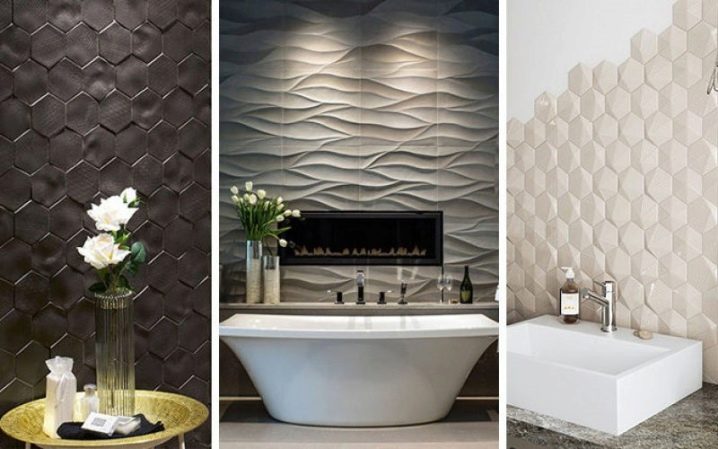
Choose accent, small cladding areas. For example, it could be a fireplace ledge. Made with tiles for brick or masonry, it will look realistic, while not disturbing the overall harmony.
Do not accentuate the plane in front of which the audio or video zone is located. So attention from plasma will switch to a three-dimensional effect, which will make the eyes uncomfortable.
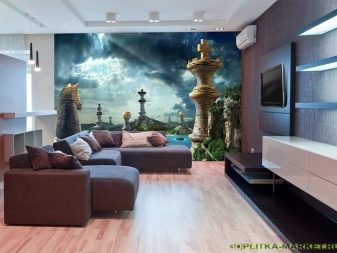
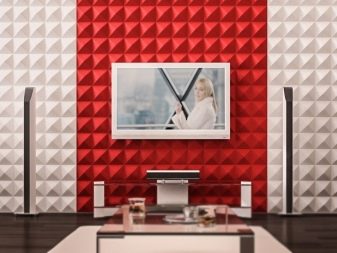
A little about styles
In order for a unique finish to look harmonious, it is necessary to take into account the specific style. The purpose of the design technique is to convey the desired texture through the material without shouting about it.
For example, a good solution would be to use tiles with a 3D effect under a plaster stucco molding with a mild relief. It can be stylized as decorative plaster. Finishing can be used to decorate a ledge, one of the edges of a rectangular column, or simulate a wall panel for a specific area.
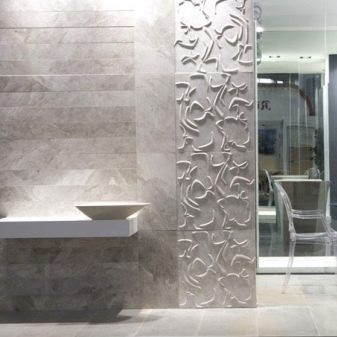
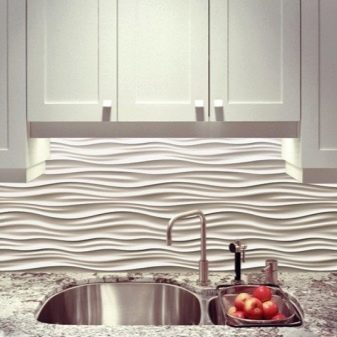
If you need to fit this material into modern stylistic directions, you should think over the drawing. A pronounced and even creative relief is appropriate in abstract designs (for example, avant-garde).
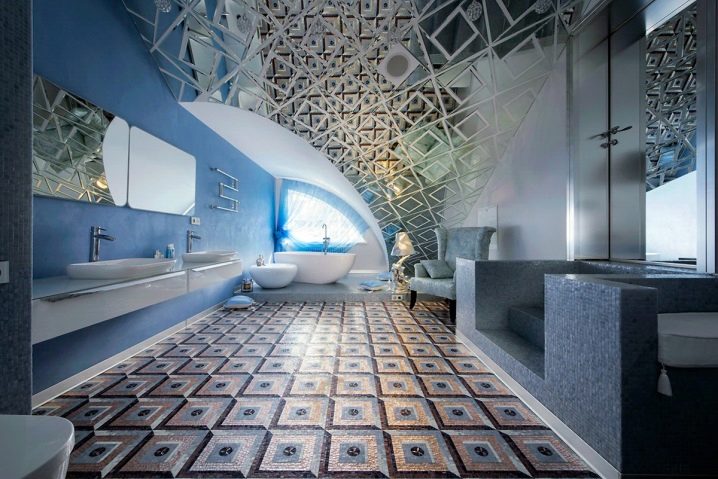
In loft or grunge design, it is better if the plane is similar to an element of an industrial object. For example, you can paste over the accent plane with tiles imitating stone or brick. At the same time, a small relief and a matte texture are enough.
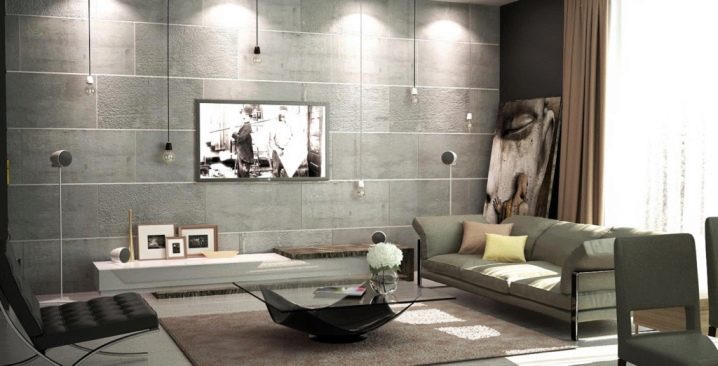
If you want to surprise guests and enjoy the very unusual design solution, you can decorate a part of the floor with unusual tiles by choosing a pattern two or three shades lighter than the floor covering, choosing a smooth texture. So the canvas will stand out against the general background, without interrupting the idea of the interior.
This material can be combined with other types of flooring. Therefore, the mixing will look monolithic even if there is no molding between the two types of finishes.
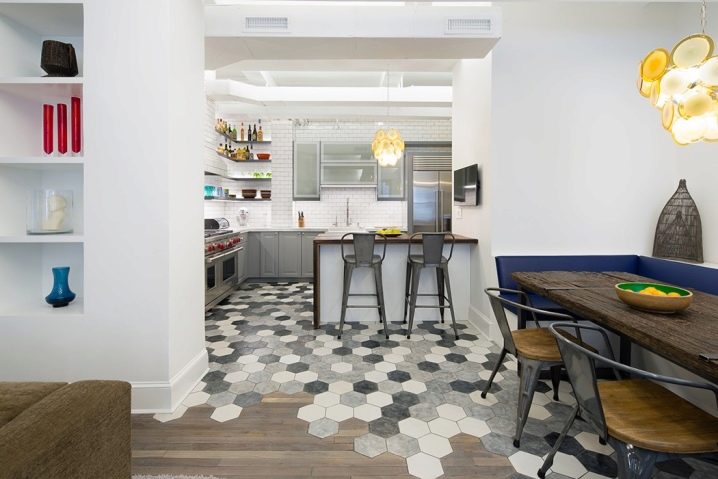
If you want to decorate the wall, it is preferable to use the panel technique. So there will not be many unusual finishes, while it will look stylish and spectacular. For such purposes, it is preferable to use a solid sheet with a printed pattern or a variant of several tiles with clear linear edges. To make the panel look complete, it is worth framing with a molding or baguette.


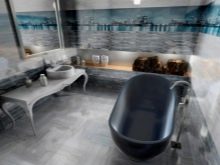
For modern trends, it is worth complementing the unusual finish with lighting, through which the three-dimensional effect is enhanced. By the way, it is the backlight that can become the connecting component of the unusual finishing of the plane and the elements of the arrangement. At the same time, the drawing should not be bright: a halo of mystery is important.
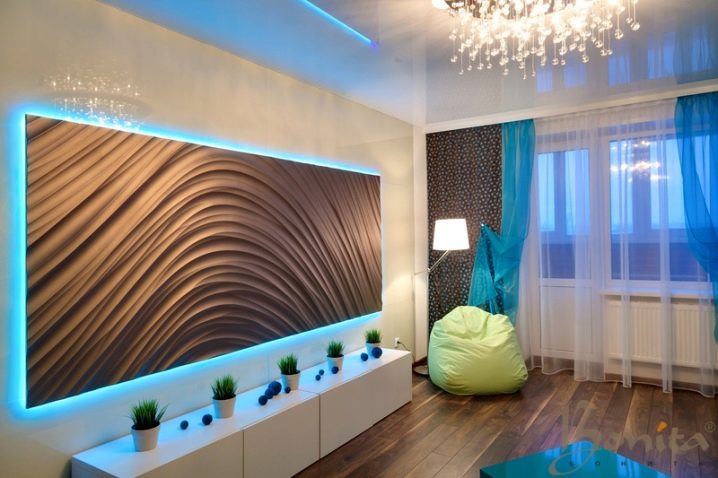
Care
Any cladding requires proper care, otherwise it will quickly lose its attractive appearance. Over time, the surface becomes covered with dust, if finished in the bathroom - limescale from hard water.
If the material is spherical, processing becomes more complicated: the first time it will not be possible to completely clean the places of the depressions. Particularly inconvenient is that cleaning deep and sharp terrain can take a long time.
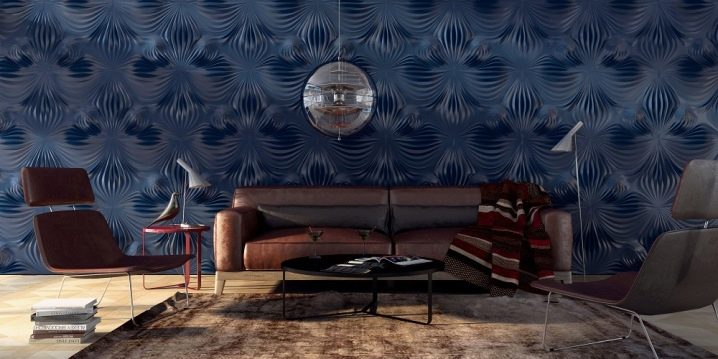
To exclude streaks and soap streaks, to make the surface clean, it is worth wiping it with a regular damp sponge. The use of hard brushes is unacceptable: despite the particularly robust performance of 3D tiles, this can lead to minor scratches
The sponge should not be excessively wet: the collected dirt can flow down, hitting the floor or furniture, if it is placed near this accent zone. After cleaning the surface with a sponge, the flat edge can be wiped with a dry cloth. This will avoid hard water streaks. If you bought a relief tile with a concave, sharp shape, wipe it with a semi-dry cloth, being careful not to get hurt. Do not flood the surface with water.
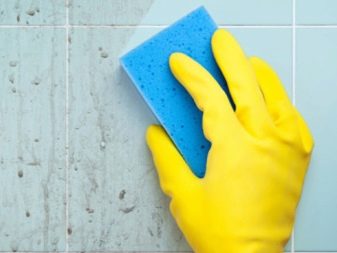
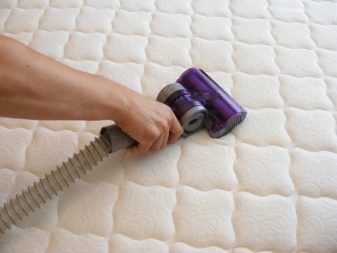
Reviews
Tiles with a 3D effect are a fairly popular material used in wall and floor decoration. This is evidenced by numerous customer reviews left on construction forums. In the comments it is noted that this material looks impressive, pleases households with the uniqueness of the texture. At the same time, those who finished the dwelling with such a material note that three-dimensional tiles are quite contradictory, you need to choose it carefully.
There are opinions in the comments indicating the ability of the tiles to change the atmosphere of the room in which the installation was made. If it is chosen in light shades of a marine or floral theme, it carries a positive that all household members notice.
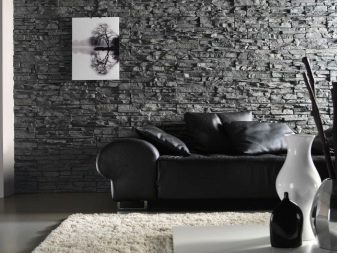
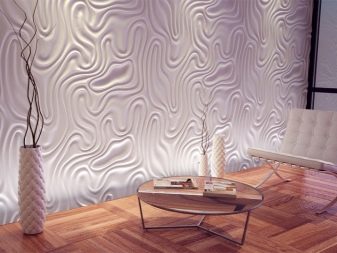
When on a plane there is a large geometric pattern in complex weaves, the effect changes the perception. Often this interior accent spoils the overall composition.
Beautiful examples in the interior
Examples from the photo gallery will help you appreciate the beauty of 3D tiles and their relevance in the interior.
A tile with a luminous image conveys the desired atmosphere in the bathroom.
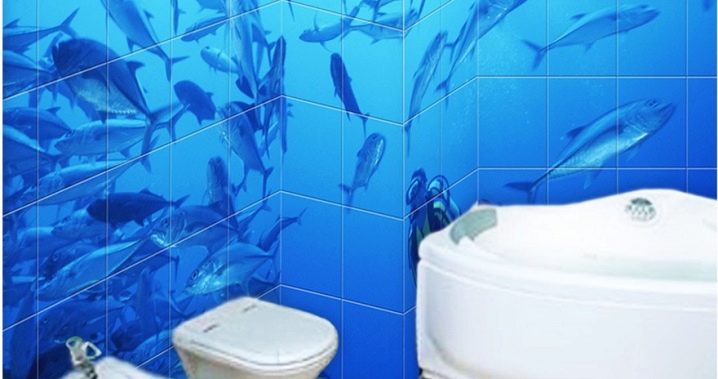
An interesting way to harmoniously combine the shade of accent areas and flooring.
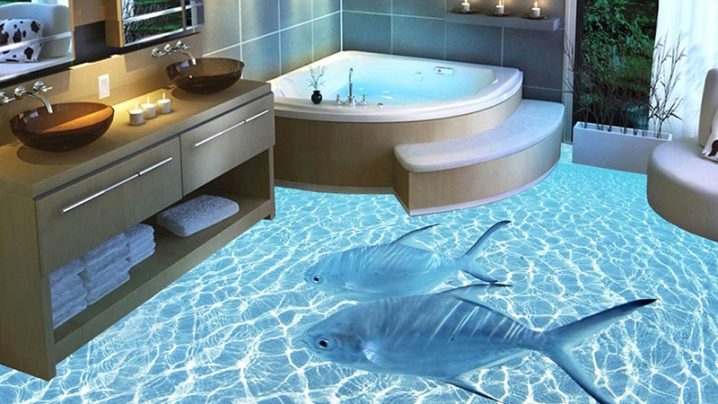
Successful design of the bathroom in the creative direction of the loft: with external simplicity, the tiles convey the desired mood.
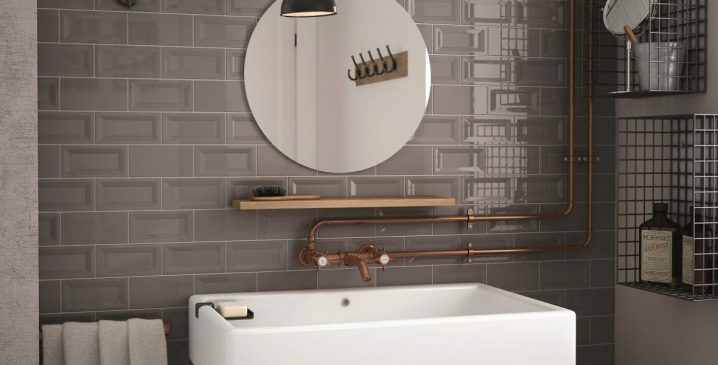
The wood-like texture will successfully fit into the ecological and modern direction of stylistics, having support in the shade of furniture finishing.
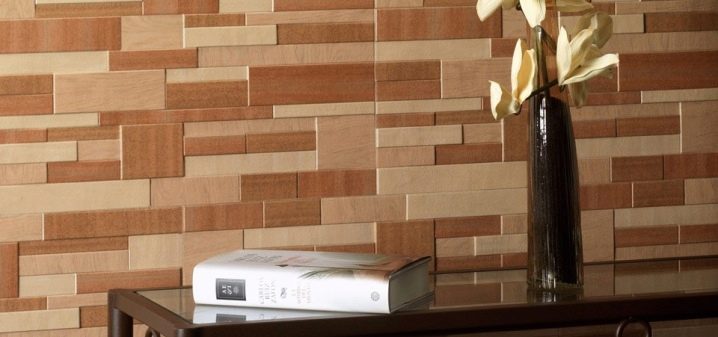
A harmonious technique for decorating an interior space in a minimalist style.
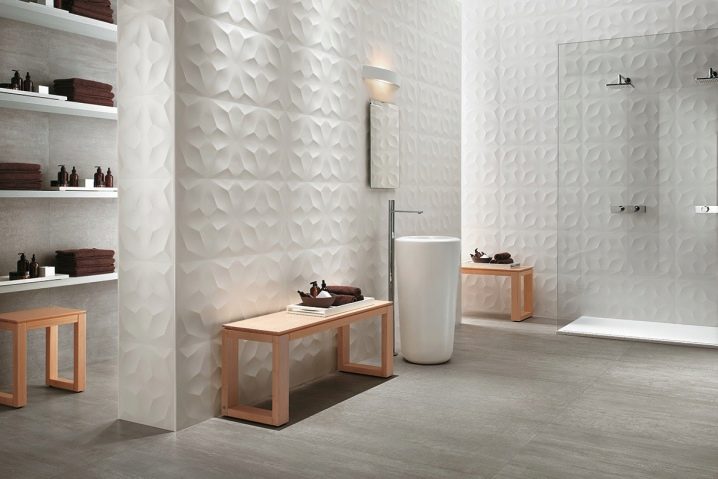
The shell panel is matched to the overall finish, while the background is slightly different, which highlights the accent area without breaking the bathroom interior.
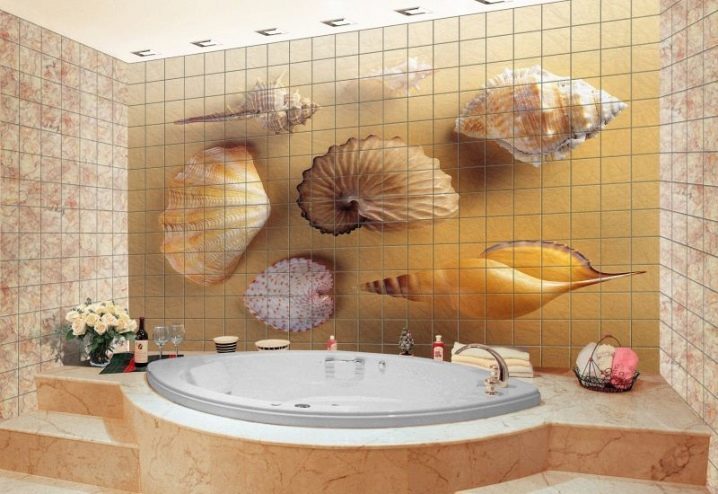
The embossed apron in the kitchen looks harmonious and stylish, leaving the dominant role for the kitchen set.
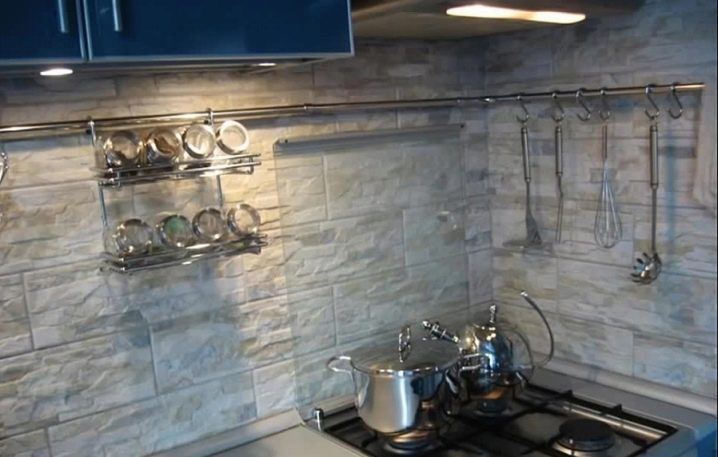
Bad examples
It is worth paying attention to common mistakes:
- an example of visual imbalance: a wall distracts attention from the TV, while straining the eyes;
- outwardly original material of large size destroys confined spaces, creating an oppressive atmosphere.
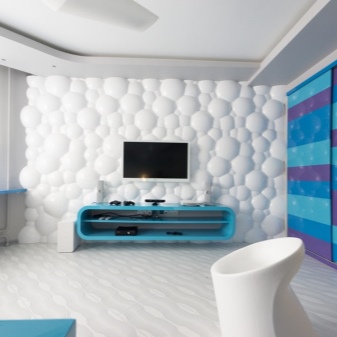
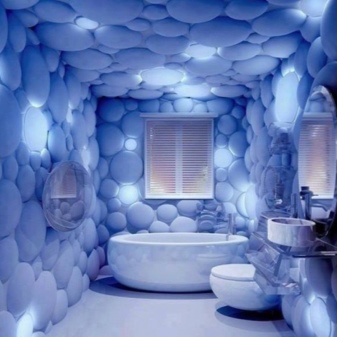
For examples of 3D tiles in the interior of the bathroom, see the following video













The comment was sent successfully.